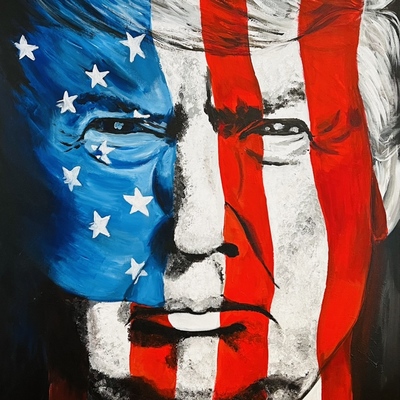Stay informed on the latest Truth Social posts from Donald Trump (@realDonaldTrump) without the doomscrolling. Consider it a public service for your mental health. (Why?)
- The United States has a significant and persistent trade deficit with Malaysia.
- This deficit is attributed to Malaysia's Tariff, Non Tariff, Policies, and Trade Barriers.
- Starting August 1, 2025, the U.S. will impose a 25% tariff on all Malaysian products imported into the United States.
- Goods transshipped to evade higher tariffs will be subject to those higher tariffs.
- The 25% tariff is not sufficient to eliminate the existing trade deficit disparity.
- There will be no tariff if Malaysia or companies within Malaysia build or manufacture products within the United States, with the U.S. promising quick approval processes.
- Any decision by Malaysia to raise its tariffs will result in that increase being added to the 25% U.S. tariff.
- The unsustainable trade deficits are a major threat to the U.S. Economy and National Security.
The post announces a direct and substantial policy action: a 25% tariff on all Malaysian products imported into the U.S. This will immediately impact U.S. companies reliant on Malaysian imports for their supply chains (e.g., semiconductors, electronics, rubber products) by increasing costs and potentially reducing profit margins. It also signals a more aggressive U.S. trade stance, which could lead to broader concerns about global trade protectionism and uncertainty for multinational corporations, thus directly impacting S&P 500 sectors with international exposure or those linked to consumer prices.
The post indicates a significant deterioration in trade relations between the United States and Malaysia, with the U.S. asserting that the trade deficit poses a 'major threat to our Economy and, indeed, our National Security.' This strong rhetoric, combined with the imposition of tariffs, signifies an escalation of economic pressure that could lead to strained diplomatic ties, potential retaliatory measures from Malaysia or other trading partners, and a broader recalibration of alliances in the Indo-Pacific region. While not a direct threat of military conflict, the framing of economic issues as national security threats raises the potential for geopolitical instability.
- Commodities: Gold (XAU) may see a slight rise as a safe-haven asset due to increased trade uncertainty. Oil (WTI) could experience mild downward pressure if broader trade tensions lead to global demand concerns. Industrial metals like Copper might be less affected unless the dispute escalates into a wider global trade conflict impacting industrial output. Short-Term Watchlist: XAU/USD price action, any specific commodity import/export data related to Malaysia. Medium-Term Focus: Global trade flow re-alignments, impact on manufacturing input costs.
- Currencies (Forex): The US Dollar Index (DXY) could strengthen initially as the U.S. asserts economic leverage, or weaken if the tariffs trigger broader risk-off sentiment or concerns about U.S. economic growth. The Malaysian Ringgit (MYR) would likely weaken significantly against the USD due to the direct negative impact on Malaysian exports. Short-Term Watchlist: USD/MYR, DXY movements in response to trade news. Medium-Term Focus: Shifts in trade balances, potential for capital outflows from Malaysia.
- Global Equities: S&P 500 sectors with high exposure to Malaysian supply chains (e.g., technology, manufacturing) are likely to face headwinds due to increased import costs or supply disruptions. The Malaysian stock market (KLCI) is expected to decline significantly. Broader global equities may react negatively to heightened trade tensions and increased protectionist sentiment. Short-Term Watchlist: Performance of U.S. tech and manufacturing stocks, KLCI performance. Medium-Term Focus: Earnings revisions for exposed companies, re-evaluation of global supply chain strategies.
- Fixed Income (Bonds): US 10Y and 2Y yields could decline if trade tensions lead to a flight to safety into U.S. Treasuries. Alternatively, yields could rise if tariffs are perceived as inflationary. Malaysian government bond yields would likely increase due to heightened economic uncertainty and potential capital flight. Short-Term Watchlist: UST 10Y yield, Malaysian sovereign bond yields. Medium-Term Focus: Inflation expectations and central bank responses, particularly from the Federal Reserve and Bank Negara Malaysia.
- Volatility / Derivatives: The VIX (CBOE Volatility Index) is likely to spike due to increased market uncertainty stemming from trade policy changes and potential retaliations. Options markets may price in higher volatility, especially for sectors directly impacted by the tariffs. Short-Term Watchlist: VIX levels and VIX futures term structure. Medium-Term Focus: Potential for a sustained shift to a higher volatility regime if trade disputes become more frequent or widespread.
- Crypto / Digital Assets: Bitcoin (BTC) may exhibit mixed reactions; it could act as a 'digital gold' safe-haven asset in an environment of trade uncertainty, or it could correlate with broader risk-asset sell-offs, particularly tech stocks. Overall impact hinges on whether the tariffs are seen as a contained event or a precursor to broader global economic instability. Short-Term Watchlist: BTC/USD price action, correlation with equity markets. Medium-Term Focus: Macro liquidity conditions, regulatory responses to global economic shifts.
- Cross-Asset Correlations and Systemic Risk: The post introduces a clear trade shock, which can stress existing cross-asset correlations, particularly between risk-on assets (equities) and safe-haven assets (bonds, gold). While unlikely to trigger immediate systemic risk, it could highlight vulnerabilities in global supply chains and trade mechanisms. Short-Term Watchlist: Breakdown in typical equity-bond correlation, movements in EM asset classes. Medium-Term Focus: Policy responses from central banks and governments to trade fragmentation, potential for trade war contagion.
- Retail Sentiment / Market Psychology: The direct announcement of tariffs and the strong rhetoric framing trade deficits as a national security threat could heighten retail investor awareness of geopolitical and trade risks. This might lead to increased caution or a focus on domestic-oriented investments. However, it is unlikely to directly trigger speculative retail phenomena like meme stock surges or altcoin frenzies. Short-Term Watchlist: Social media discussions around trade and economic nationalism. Medium-Term Focus: Consumer confidence related to international trade and supply chain stability.

